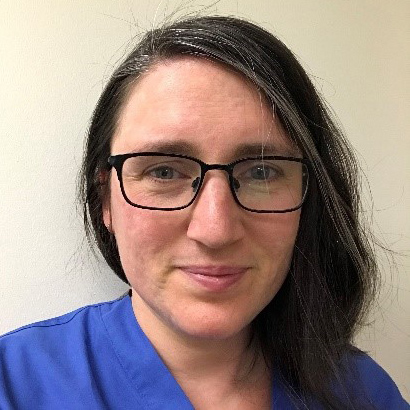Health Care Access & Coverage
Blog Post
Police Transport of Injured People to Trauma Centers in Philadelphia
Trade-Offs of “Scoop and Run”
Through a policy known as “scoop and run,” Philadelphia police play an integral and growing role in the emergency medical transport of victims of the city’s gun violence epidemic. Blood loss is the most critical threat to survival after a serious penetrating wound. Rapid transport to a nearby trauma center by police can be life-saving. When we took a closer look at which patients are transported by police, and evaluated the impact of police transport on patients, police, and clinicians, we identified important and actionable trade-offs to police transport as well as opportunities to consider its health equity implications.
The ongoing and worsening epidemic of gun violence has and continues to create a deep need for emergency medical capacity to manage life-threatening, penetrating wounds on near daily basis. With its current infrastructure and funding, EMS is unable to meet this need alone. In a city with many nearby trauma-designated hospitals, police can get patients to the hospital before an ambulance would be able to arrive. As a result, nearly two-thirds of penetrating trauma patients arrive to Philadelphia trauma centers in police cars.
Given this context, a new study of patient outcomes in Philadelphia is reassuring. Consistent with several prior evaluations, it finds that survival rates are comparable between police and ambulance transport for patients with penetrating trauma despite a uptick in the frequency of police transport over the past few years. Nonetheless, police transport upends many of the usual expectations for prehospital patient care, and puts police officers in the position of providing an essential form of health care, and patients in the backseat of a squad car, rather than on an ambulance gurney.
Talking with police-transported patients who survived their injuries piqued our interest in the broader consequences of “scoop and run,” which has been codified in Philadelphia Police Department policy since 1987. Interviews with young Black gunshot injured patients revealed conflicting interpretations of the safety and sanctuary of health care encounters when law enforcement activities overlapped with emergency medical interventions. In our recent paper we examine the context and perception of police transport in Philadelphia.
First, we looked at a recent decade of data from the Pennsylvania Trauma System’s registry to identify social and geographic predictors of police transport. Adjusting for the type and severity of injury, we found that patients who were Black and Hispanic, injured by a firearm, injured at night, and who arrived at the ED with decreased levels of consciousness (perhaps indicating to police that an injury was serious and required expedited transport) were significantly more likely to arrive at a trauma center in a police vehicle than an ambulance.
Patients who lived in regions of the city with a higher percentage of the city’s Black population, and where vacant housing and fire stations were more numerous (paradoxically from which ambulances typically deploy in Philadelphia) were more likely to be transported by police than by ambulance.
We interviewed patients, police, and clinicians to get their perspectives on police transport, and identified certain trade-offs from their point of view. Across the board, speed was interpreted as the primary advantage of police transport. Police officers also valued the opportunity to do good, saying for example, “if you save one person, you made a difference.” They also identified the need to diffuse a tense situation by removing an injured victim from the scene: “if I’m on the scene, and somebody’s son is shot, and mom and dad are screaming and yelling, ‘help him, help him, help him,’…while we’re sitting there waiting for EMS, that makes us look bad.”
But all stakeholders identified drawbacks to scoop and run. For patients, police transport was associated with physical pain and insecurity, in part, due to police vehicles and processes not designed for emergency medical care. Police identified occupational health risks like exposure to blood and bodily fluids and concerns about their preparedness to make medical triage decisions. Clinicians were concerned about occupational safety risks to police and themselves, as well as about the impact of patients arriving with minimal notification on trauma care workflow.
Transporting patients to a nearby trauma center without delay is key to saving lives after penetrating trauma. The Philadelphia experience makes it clear that police can provide this lifesaving service. However, the prevalence of police transport in Philadelphia, particularly in Black neighborhoods and for patients of color, also reflects the tragic epidemic of violence in this city, overlaid with inequity in distribution of services. The same forces of structural racism and systematic disinvestment that has segregated the city’s population along racial lines and concentrates the likelihood of exposure to gun violence in specific communities also is likely to have increased policing and exposure to negative police interactions. Police transport can compound the emotional trauma associated with exposure to intensive policing. But we also saw the potential for positive interactions between police and patients, which could be enhanced with changes to how the policy is implemented.
If police transport continues to be an alternative to EMS for penetrating injuries and considered for other time-sensitive health emergencies (such as opioid overdoses and poisoning), the inequities and downsides to current practice should be addressed with improved training, supply, and infrastructure. Based on our research, we suggest collaborative refinement of police transport policy that incorporates the perspectives of community-members, police, and clinicians. Philadelphia, and the growing number of municipalities considering police transport, should work to mitigate occupational health risks faced by police officers and ensure the physical and emotional safety of injured people during transport. Intra-city health equity needs also to be considered in how police transport is implemented. Neighborhoods with the highest relative rates of police transport can be identified for enhanced EMS access, support of bystander transport, and training to improve transport practices among officers working in these local districts. And finally, perhaps most importantly, policymakers, clinicians and members of the public- alike, can join us in interpreting police transport as a clarion call for urgent attention and investment in prevention for the public health crises created by gun violence in Philadelphia, and across the country.


The study, Beyond Survival: The Broader Consequences of Prehospital Transport by Police for Penetrating Trauma, was published in the November 2020 issue of Trauma Surgery & Acute Care Open. Authors include Sara F. Jacoby, Charles C. Branas, Daniel N. Holena, and Elinore J. Kaufman.